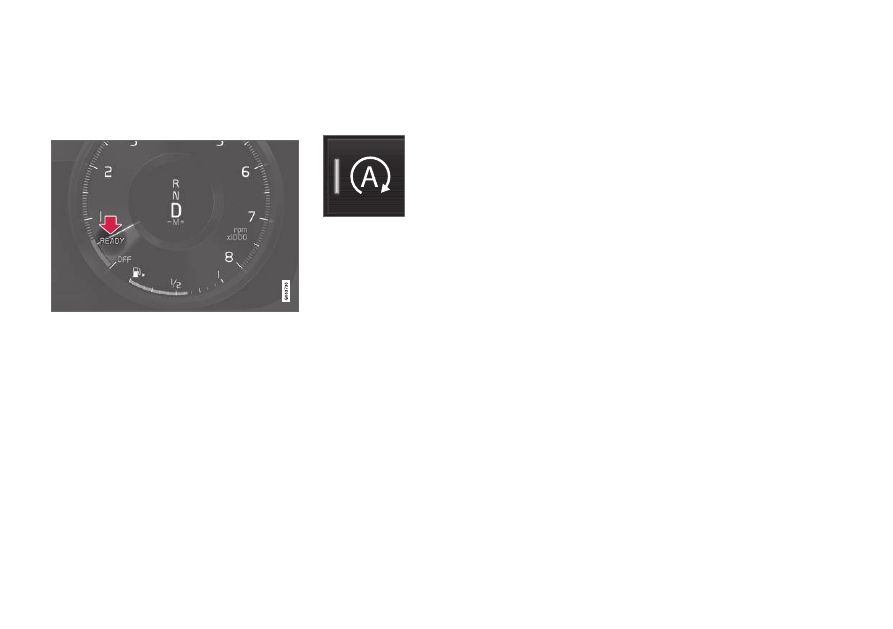Volvo XC40 (2019 year). Manual - part 23

||
STARTING AND DRIVING
396
•
READY will be grayed-out when Start/Stop
is not available.
•
No message will be shown when the func-
tion is turned off.
The function is active and the engine has auto-stopped.
Related information
•
Temporarily deactivating the Start/Stop func-
tion (p. 396)
•
Conditions for the Start/Stop function
(p. 396)
•
•
•
Temporarily deactivating the Start/
Stop function
In certain situations, it may be advisable to tem-
porarily turn the Start/Stop function off.
To turn off Start/Stop, tap the
Start/Stop
function button in
the center display's Function
view. The indicator light in the
button will go out when the
function has been turned off.
The function will remain turned off until:
•
it is reactivated
•
the drive mode is changed to Eco or Comfort
•
the engine is restarted.
Related information
•
Driving with the Start/Stop function (p. 395)
•
Conditions for the Start/Stop function
(p. 396)
Conditions for the Start/Stop
function
Certain conditions must be met for Start/Stop to
function.
If any condition is not met, this will be indicated in
the instrument panel.
The engine does not auto-stop
The engine will not auto-stop if:
•
the vehicle has not reached a speed of
ca 10 km/h (6 mph) after starting.
•
after several auto-stops, the speed must
again exceed approximately ca 10 km/h
(6 mph) before the next auto-stop.
•
the driver's seat belt is unbuckled.
•
the start battery's charge is below the mini-
mum level.
•
the engine is not running at its normal oper-
ating temperature.
•
The ambient temperature is under approxi-
mately -5 °C (23 °F) or over approximately
37 °C (98 °F).
•
windshield heating is activated.
•
the climate system settings and the actual
climate in the passenger compartment differ.
•
the vehicle is backing up.
•
the start battery's temperature is above or
below the permitted limits.
•
the driver is turning the steering wheel hard.